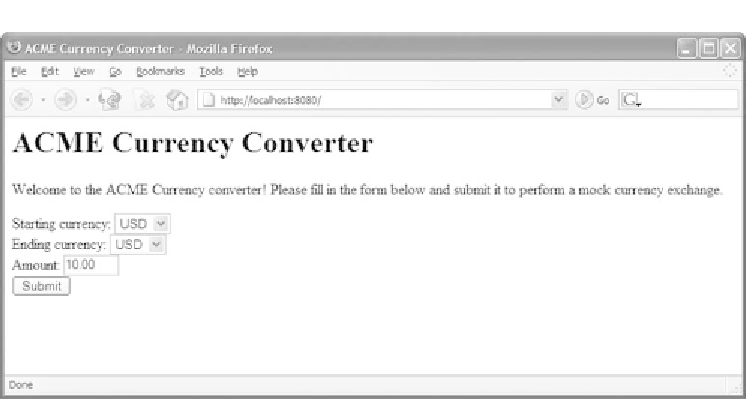Java Reference
In-Depth Information
Figure 11.21
The ACME web application, launched from IDEA's run configuration profile
Unlike a plain Java application, the web application won't shut itself down when it
executes. Tomcat continues to run, and the
ACME
web application continues to
service incoming requests until one of two things happens: either the web appli-
cation is undeployed, in which case the web application server unloads it and
removes it from public consumption, or the web application server is shut down.
When you're done playing with the converter, stop the Tomcat server by clicking
Stop
in the
Run
tool window or by pressing
Ctrl+F2
.
11.4.3
Debugging your web application
IDEA
lets you debug your web application as you would debug console or Swing
applications. With supported servers,
IDEA
even lets you set breakpoints in your
JSP
s, a feature that is extremely powerful. Web application server debugging is
accomplished through Java's remote debugging facilities. For most application
servers, debugging the application on your local host is preferable, because
IDEA
can have more control over server startup, showdown, configuration, and deploy-
ment in that environment.
In the
Run/Debug Configurations
window, the configurations categorized
under the three integrated application servers tabs (Tomcat, WebLogic, and
Generic/
JSR45
-compatible) have a
Startup/Connection
tab. One of this tab's
responsibilities is to distinguish differences between the deployed applications
running environment and its debugging environment, and this distinction is

